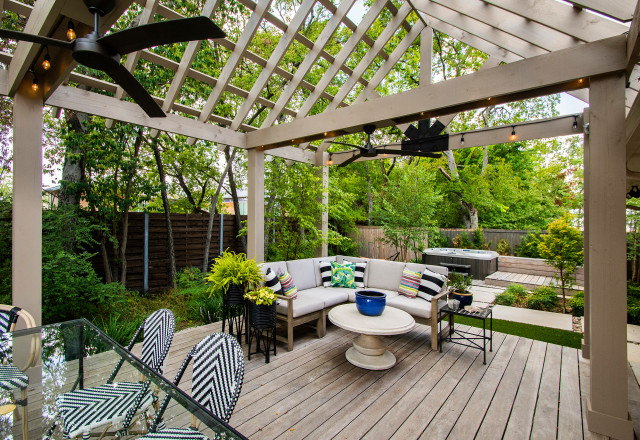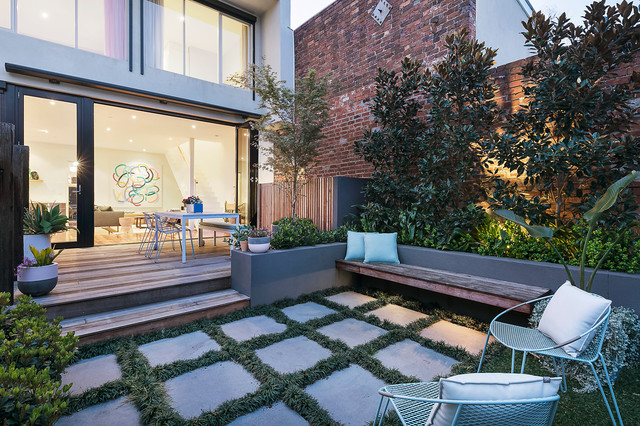What You Should Know About a Phased Landscape Design Project
Are you looking for a way to remodel your landscape but aren’t quite ready to rip everything out? Maybe you don’t have the budget for a complete overhaul? With warm-weather months on the horizon, you also might not want your entire yard off-limits.
A phased landscape design might be your answer. Breaking the remodel down into phases allows you to get started with a master plan and work on one landscape section at a time. This approach calls for lower startup costs and allows you to continue to enjoy portions of your outdoor space. If this sounds like a strategy that might work for you, keep reading to find out more about a phased landscape remodel and how to get started.
Advantages of a Phased Landscape Design
- Lower upfront costs. If your budget is limited, doing your landscape remodel in stages allows you to get started on key areas and leave other projects for when your budget allows.
- Less disruption. Phased remodels reduce overall disturbance, limiting construction and installation to specific areas and leaving the rest of the yard untouched.
- More flexibility for design changes. Concentrating first on core features, whether it’s adding a patio or deck, removing a lawn or even installing a pool, gives you time to see how the renovated space works for you and your family. You’ll be able to adapt the plan as you use the space or if your needs change.
Disadvantages of a Phased Landscape Design
- Mismatched yard. There are some drawbacks of a phased project to consider as well. The untouched parts of your yard will still need attention and may distract from the new look.
- Complexity. You may need to touch some already-completed areas to continue the remodel in the future, such as removing part of a patio to install utility and irrigation pipes or taking out or moving plants or ground covers. An experienced professional will be able to create a phasing plan that should help minimize redoing parts of the yard.
- Availability of materials and labor. Waiting to do part of a landscape project means you also run the risk of your chosen materials or preferred crew no longer being available.
- Higher overall costs. The costs for your project may increase significantly in the future.
1. Getting Started With a Phased Landscape Design
Think about what you want for your landscape before reaching out to pros. Determine how you want to use the space, what you’d like to keep and what you’d like to change.
Now’s the time to brainstorm ideas and refine your landscape design style. Browse through Houzz photos and save designs you love to your Houzz ideabooks. (These inspiration photos will come in handy when you meet with your landscape designer.) You can also walk through your neighborhood or town for more inspiration — and to see plants that will thrive in your climate.
You’ll also need to come up with a preliminary budget. Be realistic about what you can afford to spend, both now and in the future. You also can think about where you’d like to invest in your landscape renovation and where you might be able to save.

2. Finding a Landscape Professional
The right landscape professional for your project depends on its size and scope, as well as your budget. You can work with a landscape architect, landscape designer, landscape design-build firm or landscape contractor. Each pro type has its own strengths and focus, which also varies by firm. Whichever you choose, check the pro’s experience, read reviews and be sure their vision aligns with yours.
A landscape architect is licensed to provide complete drawings for a landscape design, including construction plans for grading and drainage. They can also design a master plan for your landscape and advise you on how to phase the project. They may have a landscape contractor they prefer to work with or can provide recommendations.
A landscape designer specializes in planning and providing horticultural advice. They are not licensed, though many have training similar to that of landscape architects. They can also provide recommendations for landscape contractors.
Though the skills and expertise of landscape designers and landscape architects can vary widely, the main difference between the two is that landscape architects are licensed and registered with the state. Whether you choose to hire a landscape architect or a landscape designer will likely come down to personal preference and your project’s complexity and requirements.

A landscape design-build firm provides both design and construction services. You’ll have the advantage of a team that has a proven track record of working together, which can make the project go more smoothly. A full-service landscape design firm also may be able to provide continued maintenance once the project wraps up.
3. Creating a Master Plan
Creating a master plan for your entire landscape is key. It will allow you to focus on one area at a time while ensuring that your yard will look cohesive when you’re done. Work with your designer to include as many details as possible to ensure things go smoothly in the future. You can, and probably will, make adjustments to the plan, but the basic design will be in place.
A pro can help you decide which part of the renovation to tackle first and create a timeline for future work. They can also recommend any improvements you should do for the entire site during the first phase of the project. These might include grading, running utility lines for future plumbing and electrical needs or adding a basic irrigation system. This can save you money and reduce the likelihood of having to redo portions of your landscape in the future.
Consider asking your pro about making temporary improvements to the parts of your landscape you plan to overhaul in later phases. It might be as simple as removing overgrown bushes or a struggling lawn and replacing it with mulch or bark — which could be beneficial to do now if you’re planning to lose your lawn.
Check with your team about adding elements like trees and large shrubs early in the project, as it will give them time to mature.
Other Considerations for a Phased Landscape Renovation
- Timeline. Ask about the process itself, including the timeline and what to expect in terms of demolition and construction. What will the work hours be?
- Access and storage. How will workers access your yard and what accommodations will you need to make both for them and for your family? Where will materials be stored?
- Contact person. Who will be the contact person if questions arise? The more you know about what to expect, the easier the process will be.
- Paperwork. Be sure you have a copy of the master plan, permit details and any required sign-offs on your work. Having everything handy will ease the transition if you need to make a change from one professional team to another in the future.








Comments
Post a Comment